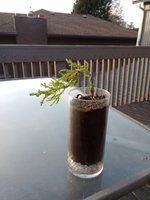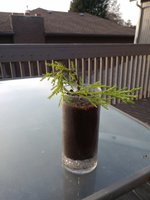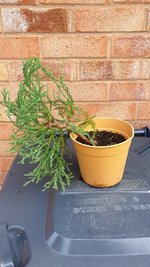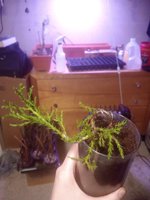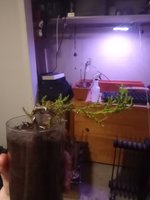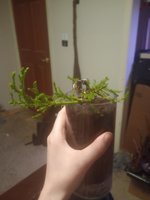doc spring _work
Shohin
Realized i didn't make a thread for this  still getting use to the form
still getting use to the form
Yesterday I trimmed my 1-2 year old Sequoia and took the plunge of wiring and shaping it as I had been reluctant to do so without greater growth on it but after some work with yamadori I realized if I wanted a clean refined tree In the future i needed to just do it!
Decided to do a cascade style and although the tree is still rather small I look forward to trimming it and developing pads and length even if that may be years down the line,
I do think I'll go invest in some clay and make my own pot for it's final pot, I've never seen a hanging pot in bonsai but I think it'll fit if I can make a nice pot for it.
Photos included on my first steps on shaping,
I have been trying to propagate all of my trimmings so far (there's no way that keeps happening) but hopefully the artificial rooting hormone will be the right level and they take root
Yesterday I trimmed my 1-2 year old Sequoia and took the plunge of wiring and shaping it as I had been reluctant to do so without greater growth on it but after some work with yamadori I realized if I wanted a clean refined tree In the future i needed to just do it!
Decided to do a cascade style and although the tree is still rather small I look forward to trimming it and developing pads and length even if that may be years down the line,
I do think I'll go invest in some clay and make my own pot for it's final pot, I've never seen a hanging pot in bonsai but I think it'll fit if I can make a nice pot for it.
Photos included on my first steps on shaping,
I have been trying to propagate all of my trimmings so far (there's no way that keeps happening) but hopefully the artificial rooting hormone will be the right level and they take root

